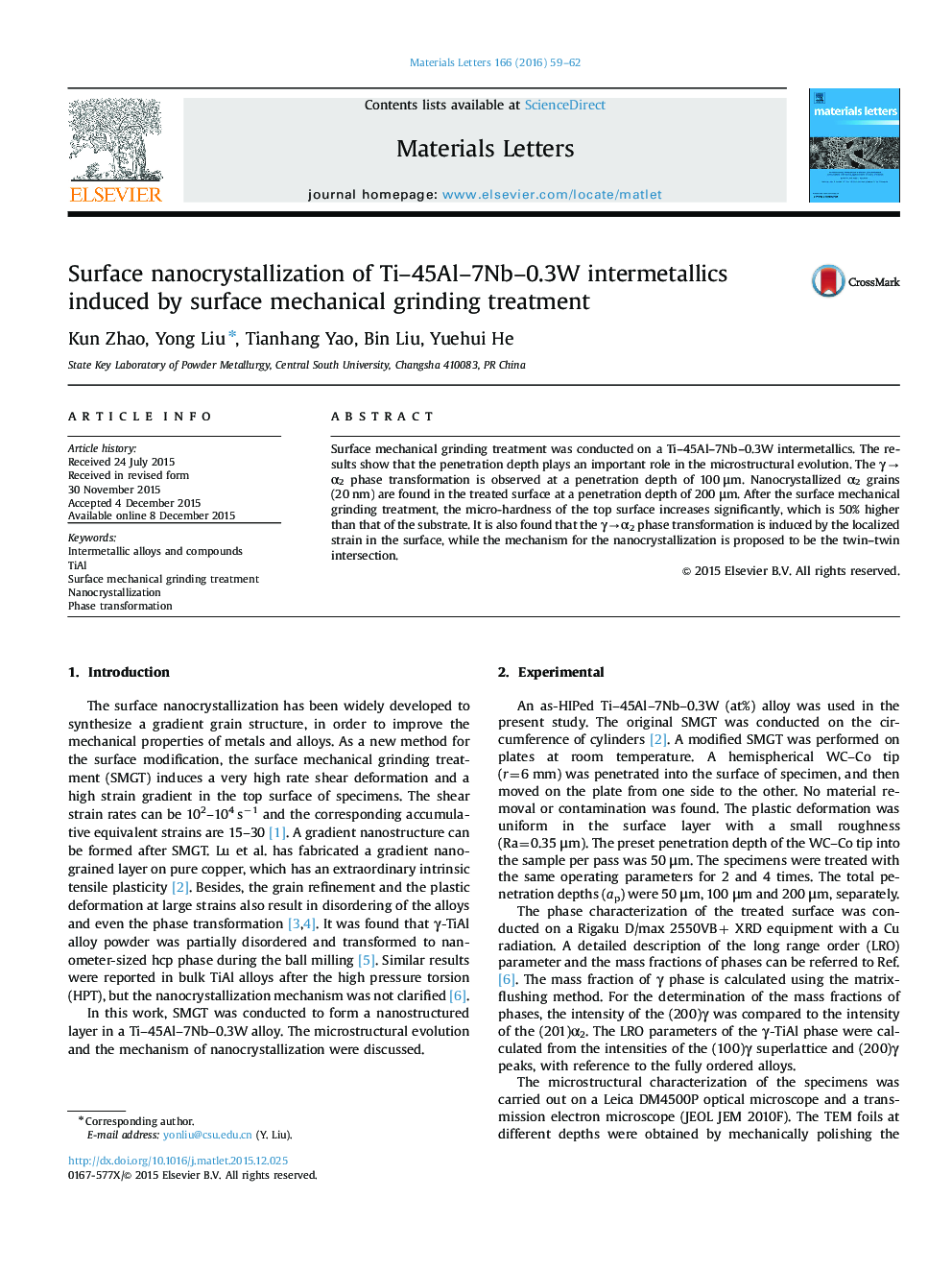| Article ID | Journal | Published Year | Pages | File Type |
|---|---|---|---|---|
| 1642156 | Materials Letters | 2016 | 4 Pages |
•Surface mechanical grinding treatment was conducted on a Ti–45Al–7Nb–0.3W alloy.•The γ→α2 phase transformation is observed.•Nanocrystallized α2 grains (20 nm) are found in the treated surface.•The micro-hardness of the top surface increases significantly, which is 50% higher than that of the substrate.•The mechanisms of γ→α2 phase transformation and nanocrystallization are proposed.
Surface mechanical grinding treatment was conducted on a Ti–45Al–7Nb–0.3W intermetallics. The results show that the penetration depth plays an important role in the microstructural evolution. The γ→α2 phase transformation is observed at a penetration depth of 100 μm. Nanocrystallized α2 grains (20 nm) are found in the treated surface at a penetration depth of 200 μm. After the surface mechanical grinding treatment, the micro-hardness of the top surface increases significantly, which is 50% higher than that of the substrate. It is also found that the γ→α2 phase transformation is induced by the localized strain in the surface, while the mechanism for the nanocrystallization is proposed to be the twin–twin intersection.
